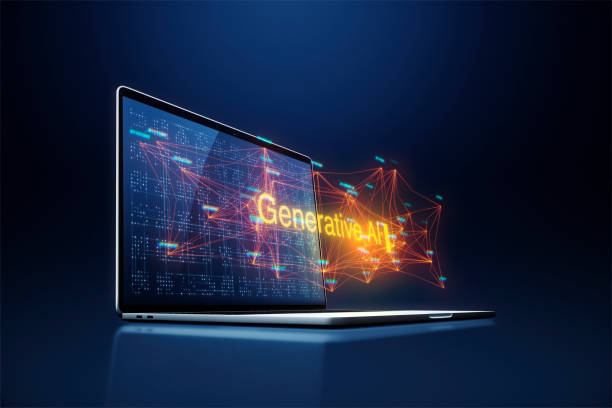8 Key Features of A Good Learning Management System (LMS)

Before considering the Key Features of A Good Learning Management System (LMS), we shall show you what an LMS is, top LMS functions and the top LMS features.
What is a learning Management System?
According to Wikipedia, A learning management system (LMS) is a software application for the supervision, citations, reporting, follow-up, and delivery of educational courses or training syllabus.
In other words, an LMS can be defined as an application software that helps monitors activities for improved employee or educational feat assessment, competence management, publish and place self made course online and other functions.
See a Review of Best 20 Learning Management System (LMS) Software in the world and List of 10 Best Learning Management Systems in Nigeria
Functions of Learning Management System
LMS allows administrative to plan and manage several functions in an organisation effectively with little or no glitches. Some of the following points highlighted below are comprehensively listed and broadly explained to help readers understand the functions of LMS(s).
Management and Administration
A good LMS helps facilitate the ways of getting enrolment endorsement, individual registration(s), verifying prerequisites and basic rudiments in running an effective and very well organised and properly governed organisation.
Technical and non-technical know-how Management
With this function, employers can monitor and control as well as deal with the skills and abilities its organisation’s workers by comparing and contrasting them against their business targets. Such can be done by executing skills gap analyses and suggesting rigid erudition solutions to correct gaps in the skill base of the organisation. It is beneficial to organisations, since it is judicious and cost-effective.
Follow-up and Accountability
LMS offers varieties of standard and custom synopsis and specified reports, so that the user can view his average test scores, examination scores, single learner report, organization record, and the summing up of overall assessment taken.
Specific Objectives and Benchmarking
Another function of a helpful Learning Management System is that it sets out definite objectives for employees to achieve within a stipulated period. This is especially essential when the business eLearning program includes compulsory online training and certifications. In such cases, employers will expect nothing less than the best from their employees and also let them know just what they need to accomplish and when it is appropriate.
With that, they can plan out how to complete the training to meet their respective goals. In some cases, the Learning Management System may even include an online training schedule that features upcoming time limit and imperative live events.
Read also: Benefits of LMS for eLearning | Learning Management Systems
Key Features of a Good Learning Management System (LMS)
LMS today is a onetime stop for hosting, managing, reporting, and weighing up e-learning tutorials. The uses vary from different administrative, educational and deployment functions. So, if need be to pen down the top features of any LMS, it would then be as follows:
1. Ranges from online to flipped study room
A good LMS helps lecturers deliver material to the scholars; oversees the giving and conduction of tests and other assignments, monitor student progress, and control different record-keeping. LMSs are more concerned about online education delivery but supports variety of uses, substituting as a dais for full online courses, as well as numerous amalgam forms, such as blended learning and tossing classrooms.
Read also: Flipped Classroom Model: Easy Strategies for Its Implementation
2. Making available appropriate schedule for learning
This feature facilitates LMS users to analyze accessible training programs or courses at one glance making it easier to send requests for courses they are interested in as well as register for it easily.
3. Certification and exhibition of scores and records
With this feature of LMS, users will be able to access be it employee, students or individual scores and transcripts and maintain a current record of such individual. It can also help in certifying employees or specific individuals that have completed their courses.
4. Communication and notifications of learners
It is possible to communicate, send reminders and update users of upcoming events and the deadlines, platforms for questions and answers and other important features that make learning imperative and interesting. This is better achieved when the platform is interactive for discussions and also Peer Support.
Communication and learning work together easily, bringing the users to support each other and subject matter to experts together. It is possible to create an active environment with a personal experience by choosing a platform with joint forums and sustain tools. Users can use these tools to solve quandaries, work through challenging theories, and support one another all through their learning know-how.
If an LMS doesn’t have dialogue forum and peer-to-peer support team, it characteristically incorporates with a platform that does.
5. Promotion of other internet courses
A good learning management system does not limit itself to the courses it provides alone but it expands its scope to other systems so that its users can have first hand information about the courses it offers users. It does so by promoting existing e-Learning courses to persuade more registrations to its system.
6. Evaluation that can help ignite the user’s pre/post testing
LMS helps upload assessments which can serve as a summary to the initial classroom training programs by diagnosing assessments to review the level of knowledge of its users and the suitable level to them.
7. Managing users, itinerary, responsibility, trainers, and developing reports
This includes uploading courses, assigning roles, recommending courses and generating various reports. User characters and roles are important as they make available to other users with the correct altitude to access rights and concessions – as plotted to suit their needs.
Read more about the features here.
8. Miscellaneous Content Options
People differ and so does their brains. Everybody cannot learn the same way learns the same way. Maybe you still probably remember those old school friends always falling asleep in high school during some lectures or all lectures generally, or those who couldn’t congregate the attention to read textbooks every night. The truth is that these friends had different learning styles which vary entirely from yours. Some may be able to comprehend easily from what the teachers is saying while some have preferences for audio or video mode for learning.
Read also: Learning Management System (LMS) | The Missing Link in Education
Conclusion
There are four generally recognized learning styles, and it includes visual learners, written learners, auditory learners and kinesthetic learners (those who learn by putting the actions to practice). See 8 Career Readiness Skills Students Can Develop Using LMS
With the accurate Learning Management System software, one can create lessons for each of these erudition types. Be it videos, MP3 files, written documents or things of such vices are just a few of the preferences flexible LMS software offer. The best learning management software also includes live webinar materials, news feeds, podcasts, and as well as micro learning and merge-able learning alternatives.
Users can adapt their educational experience by picking e-learning Courses with the tools that works best for their learning technique. That makes the course covered, more effective and informative as they now can use such platform to improve their personal, advanced or professional career.
Endeavour to read on the Top E-Learning Platforms In Nigeria.







